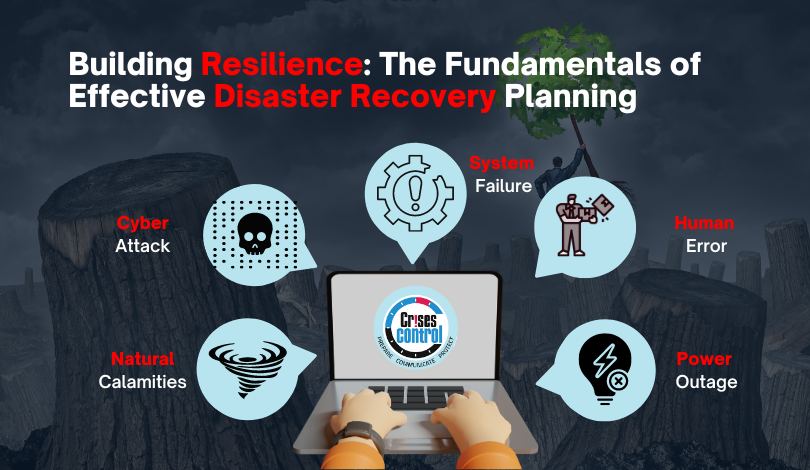No one can anticipate when a disaster will strike, but with the right strategies and preparation, businesses can build resilience and mitigate potential risks. It is essential for organisations to be prepared with effective disaster recovery planning, crisis management strategies, and incident response capabilities. In this blog, we will delve deeper into these practices and offer actionable insights to help your organisation build resilience and withstand unexpected challenges.
The Importance of Disaster Recovery Planning
Understanding Disaster Recovery
Disaster recovery planning is a strategic and systematic approach to prepare for and respond to disruptive events. It involves identifying potential risks, developing comprehensive recovery measures, and deploying those measures to restore critical systems, data, and infrastructure in the event of a disaster. The goal is to minimise downtime and ensure business continuity, even in the face of adversity.
Benefits of Disaster Recovery Planning
- Minimise Downtime: A well-crafted disaster recovery plan ensures swift recovery, minimising downtime and enabling businesses to resume operations without significant disruptions. This leads to reduced financial losses and maintains productivity.
- Safeguard Data: Disaster recovery planning involves regular data backups and security measures, protecting critical information from loss, theft, or cyberattacks. This protects both the organisation and its customers’ data.
- Protect Reputation: Prompt and effective recovery efforts preserve trust and confidence among customers, partners, and stakeholders. This, in turn, safeguards the organisation’s reputation and enhances its brand image. With Crises Control’s real-time communication features, organisations can provide transparent and timely updates during crises, preserving trust and confidence among customers, partners, and stakeholders.
- Compliance and Legal Obligations: Disaster recovery planning helps organisations comply with industry regulations and legal requirements related to data protection and business continuity.
Crisis Planning for Effective Disaster Response
Identifying Potential Crisis Scenarios
Effective crisis planning begins with conducting a thorough risk assessment to identify potential crisis scenarios that could impact the organisation. These scenarios may include natural disasters, supply chain disruptions, public relations crises, cyber incidents, and more. Understanding these risks is crucial to developing tailored response strategies. Crises Control offers solutions such as Crisis Management Team (CMT) simulations and wargaming, allowing organisations to test their response, identify their gaps and strengthen their defence.
Developing Crisis Response Teams
Crisis response teams are the backbone of effective crisis management. These teams consist of experts from different departments within the organisation, each with unique skills and insights. When a crisis occurs, these teams work cohesively to make informed decisions, coordinate response efforts, and manage the situation effectively.
Communication and Media Handling
During a crisis, clear and transparent communication is paramount. Crisis planning involves setting up communication channels and protocols to keep employees, customers, partners, and the media informed. Effective communication helps manage the narrative, minimise misinformation, and maintain trust with stakeholders.
Incident Management: Handling Crisis in Real-Time
Incident Assessment and Categorisation
In the heat of a crisis, rapid incident assessment is essential to determine the severity and potential impact on the organisation. Categorising incidents based on their nature and scope allows organisations to prioritise their response efforts effectively.
Implementing the Incident Response Plan
An organisation’s incident response plan is a detailed guide that outlines specific actions and responsibilities for each type of crisis. Regular training and simulations ensure that employees are familiar with the plan and can respond swiftly when required. By adhering to the plan, organisations can minimise the damage caused by the crisis.
Learning from Incidents: Post-Incident Analysis
After successfully resolving a crisis, conducting a post-incident analysis is essential for continuous improvement. This analysis involves evaluating the effectiveness of the response, identifying strengths and weaknesses, and implementing necessary changes to enhance future disaster recovery planning and response strategies.
Conclusion
In conclusion, building resilience through effective disaster recovery planning, crisis management, and incident response is a critical investment for any organisation. By understanding the fundamental principles and implementing robust strategies, businesses can withstand and recover from various crises. To experience firsthand how Crises Control can assist your organisation in disaster recovery planning and crisis management, request a live demo or get in touch with our expert team.








